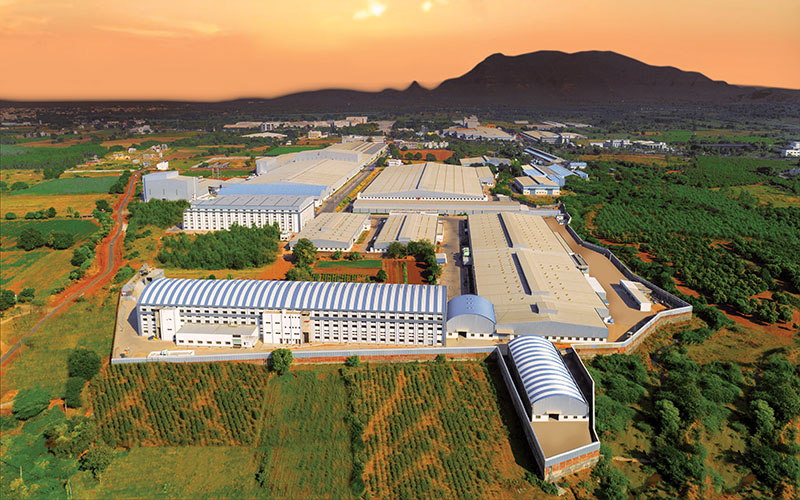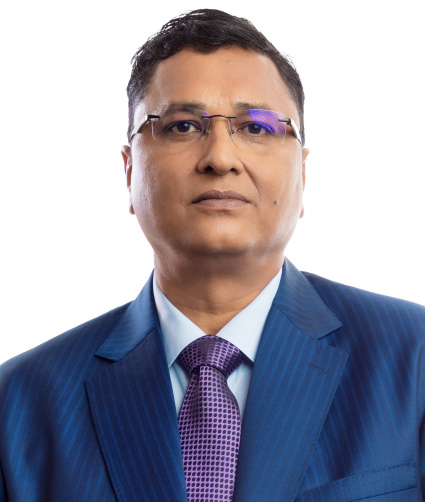“Polycab is the market-leader in the wire and cable segment in India, with more than 18% of the overall market-share. Despite being a relatively new entrant in the telecom industry, we achieved an impressive growth in OFC-sales in FY 2019-20.” – Mr. Ashish D. Jain
Involved in manufacturing optical fibre cables since 1998, today, Polycab India has a state-of-the-art manufacturing facility and an independent business-vertical for OFCs, FRP/ARP Rods, IGFR Yarns and Communication Cables at Halol in Gujarat. Polycab’s Telecom Division has been working for BharatNet project as a Project Implementing Agency (PIA) and now, it has introduced end-to-end passive networking products with a comprehensive host of accessories.
In an interview with Wire & Cable India, Mr. Ashish D. Jain, Executive President & COO, Telecom Division, Polycab India Ltd. sheds light on the business story of the Company, the market presence, the company’s growth strategies including their capacity expansions, the outlook on ‘BharatNet’ initiative, and the key steps to make India a global hub for OFC-production in line with the ‘Aatmanirbhar Bharat’ mission.

Wire & Cable India: Could you please present a brief overview of the business-story of the telecom division of Polycab India Ltd.?
Ashish D. Jain: Polycab India Ltd. is one of the most recognized and trusted Indian names, with leading market position in wire & cable and FMEG segments. As connectivity undergoes evolutionary changes in most parts of the world and ‘digital data’ becomes the new currency of our networked future, we’ve made a strong foray into the telecom domain, responding to the emerging times and opportunities.
We’ve traversed a remarkable journey of more than five decades of proven expertise and experience in cable manufacturing, which makes us uniquely positioned to manufacture and craft a whole range of end-to-end passive networking products and accessories for voice, data and video applications of communication networks. Of course, passive networking has two facets, first, creation of the new passive networking infrastructure and second, up-scaling of the existing ones. We’ve built capabilities at both the levels, to have strong business potential for ourselves.
With a dedicated manufacturing set-up of data networking products and accessories, comprising copper cables and optical fibre cables, and capability to execute end-to-end network roll-out, the business story of the telecom division of Polycab signifies the core vision of a smarter world.
“As far as increasing the fibre-based network is concerned, regulatory policies, investments and infrastructure readiness will play a key role. In addition, an integrated RoW-policy would go a long way to bring in the required speed for smooth fibre roll-out.”
WCI: In view of the futuristic technologies such as 5G, AI and IoT-applications, and considering the major developments in 2021, 4G spectrum auctions and upcoming 5G-launch, how do you think these will influence the growth of the telecom sector infrastructure?
ADJ: Futuristic technologies and especially 5G, as a next-generation wireless technology, would definitely create requirements of low latency and ultra high speed data rate. Further, the widespread use of digital services would generate huge data traffic and connection density. And all of these would require a rapid and structured optical fibre roll-out at massive scale in India, which subsequently would provide tailwinds to our sector.
“Several ongoing projects like BharatNet, FTTH, 4G and 5G-rollout would create a huge demand for OFCs in the coming future.”
WCI: Would you mind sharing details about India’s total fibre footprint, as compared to the global average and the ways in which the fibre growth is being driven here? Also, how do you relate Polycab’s role in this growth story of telecom infrastructure?
ADJ: India’s per capita fibre-coverage is 0.09 km, against 0.87 for China and more than 1.3 for the United States and Japan, as per an ICRA Research Report. As far as increasing the fibre-based network is concerned, regulatory policies, investments and infrastructure readiness will play a key role.
In addition, an integrated RoW-policy would go a long way to bring in the required speed for smooth fibre roll-out. Fibre-first initiative with incentives and promotion for fibre connectivity in new residential and commercial developments should lead the way in response to the impending 5G-deployments. Our government has recently approved enlistment of telecom equipment manufacturing for the PLI-scheme, which would definitely motivate and boost the ‘Make in India’ model in the sector. The fibre deployment in the country will need to increase 2-3-fold from current market of 16-18 million fkm per year to realistically match up the global average.
The government has also intensified its efforts to fast-track ambitious projects like BharatNet and fiberization of each telecom tower to facilitate fibre connectivity for each household. Polycab has deep expertise in manufacturing OFCs and has successfully executed end-to-end network roll-outs.
“The next five years would be as promising, as we have been working for BharatNet projects as a Project Implementing Agency (PIA).”
WCI: Kindly outline the different markets you serve and your plans for further expansion to different geographies! What are your views on the potential of the Indian telecom and optical-fibre-cable market?
ADJ: As our government, under the dynamic leadership of Shri Narendra Modi, has made a clarion call for Aatmanirbhar Bharat to make our country play a bigger role in the global economy, Polycab is uniquely positioned in providing end-to-end data and power-solutions in different markets across geographies. Secondly, Polycab has a strong national presence with a large network of partners and consortiums to work on various projects.
Several ongoing projects like BharatNet, FTTH, 4G and 5G-rollout would create a huge demand for OFCs in the coming future. Moreover, the new work-from-home culture has created necessary and enormous demands for bandwidth-requirements with quality services from the telecom industry. Ensuing demands for OFCs and passive infrastructure would surely expand the optical fibre cable market in the country.
WCI: Could you please share some details about the Polycab’s performance and growth registered in the previous year in the telecom-segment? How do you envision the next five years for the company’s growth? Also, has there been any or do you plan to make any investments for capacity-expansion or technological upgradations for the OFC-segment?
ADJ: Polycab is the market-leader in the wire-and-cable segment in India, with more than 18% of the overall market-share. Despite being a relatively new entrant in the telecom industry, we achieved an impressive growth in OFC-sales in FY 2019-20.
The next five years would be as promising, as we have been working for BharatNet project as a Project Implementing Agency (PIA). Further, building on our strength of OFCs and data cables, we would be launching end-to-end passive networking solutions with a whole host of accessories. With a single OEM-strategy for electrical and passive networking solutions and accessories to get all its products under one brand, Polycab creates strong national sentiment and aligns perfectly with the essence of Indian government initiatives like ‘Make in India’ and ‘Aatmanirbhar Bharat’. Riding on the trust and brand value of competitive products at affordable prices, our telecom division is certainly headed for healthy growth over the next five years.
Speaking of technological expansions, we can say that they are integral in our mechanism, as an ongoing process. We’ve already expanded the factory-production capacity by three times, from the time we started our journey and have been doing so in the lockdown-period as well, particularly in the OFC-segment.
“We’ve already expanded the factory-production capacity by three times, from the time we started our journey… particularly in the OFC-segment.”
WCI: How pertinent do you deem national initiatives like ‘Digital India’ and ‘NOFN’ for surging the scope of OFC-demand in the country in general, and the growth of your telecom cable business in particular?
ADJ: OFCs have always been the real spine for high-speed digital infrastructure. And a digital infrastructure, which enables high speed in the data flow and makes the networks meet the standards of desired performance and longevity, is the bedrock to realize the aims of ambitious initiatives like Digital India and NOFN, which was renamed later as BharatNet. So, as these initiatives gain momentum, the demand of the OFCs will augment further in all the corners in our country.
Polycab, with its consortium partners, has already demonstrated its end-to-end network roll-out capabilities in Bihar and Gujarat. Moreover, we are actively exploring several other opportunities. With our strong manufacturing capabilities for data and power-solutions and proven knowhow for high-speed network roll-out, we are proactively contributing towards ‘Digital India’ journey.
WCI: What could be the key steps that could pave the way to make India a global hub for OFC-production and supply and support the country’s ‘Aatmanirbhar Bharat’ mission in the sector?
ADJ: India can very well emerge as a global hub for OFC production. If OFC manufacturing also gets included in the recently announced PLI scheme of the government, a new wave of technological advancements and investments would propel the sector to a higher level altogether. Additionally, an ecosystem of innovations, cost-competitiveness and ease of doing business in OFC manufacturing would certainly support missions like ‘Aatmanirbhar Bharat’ in the sector.





